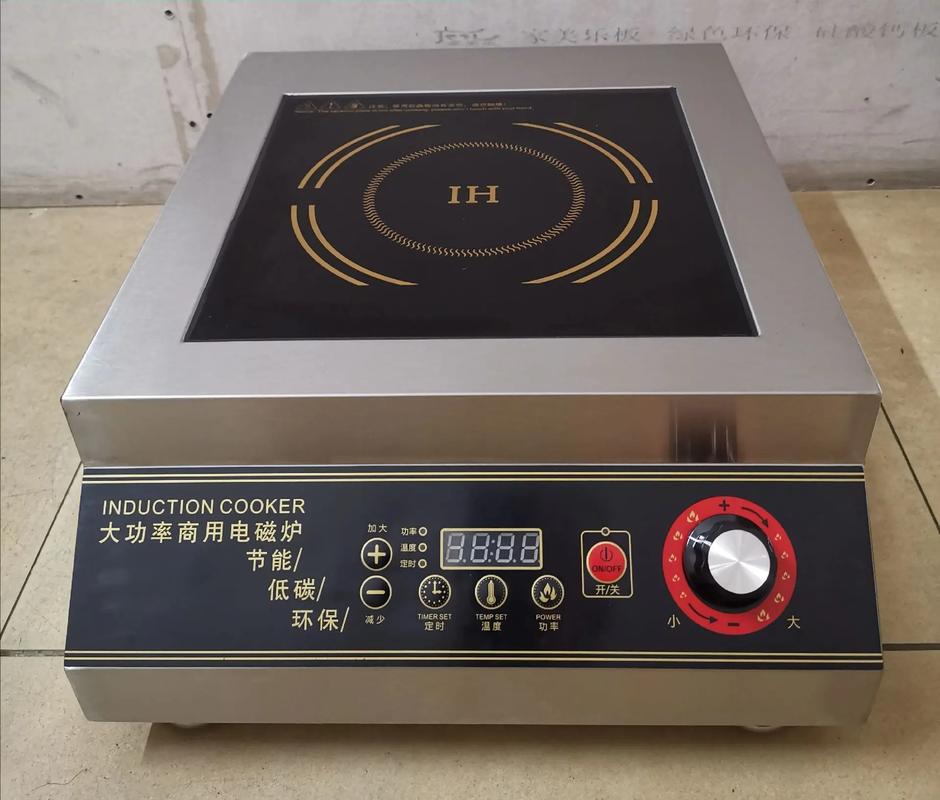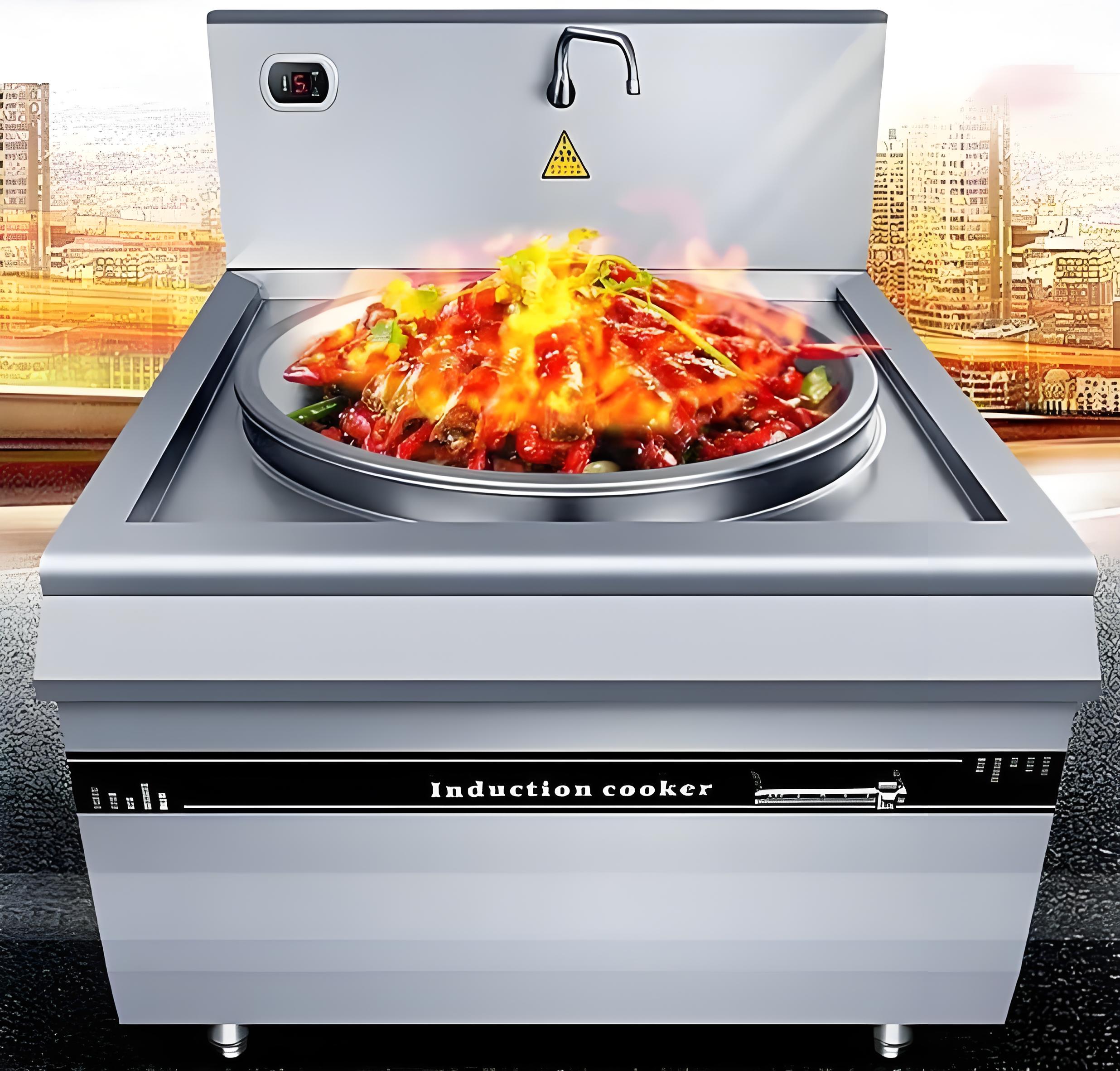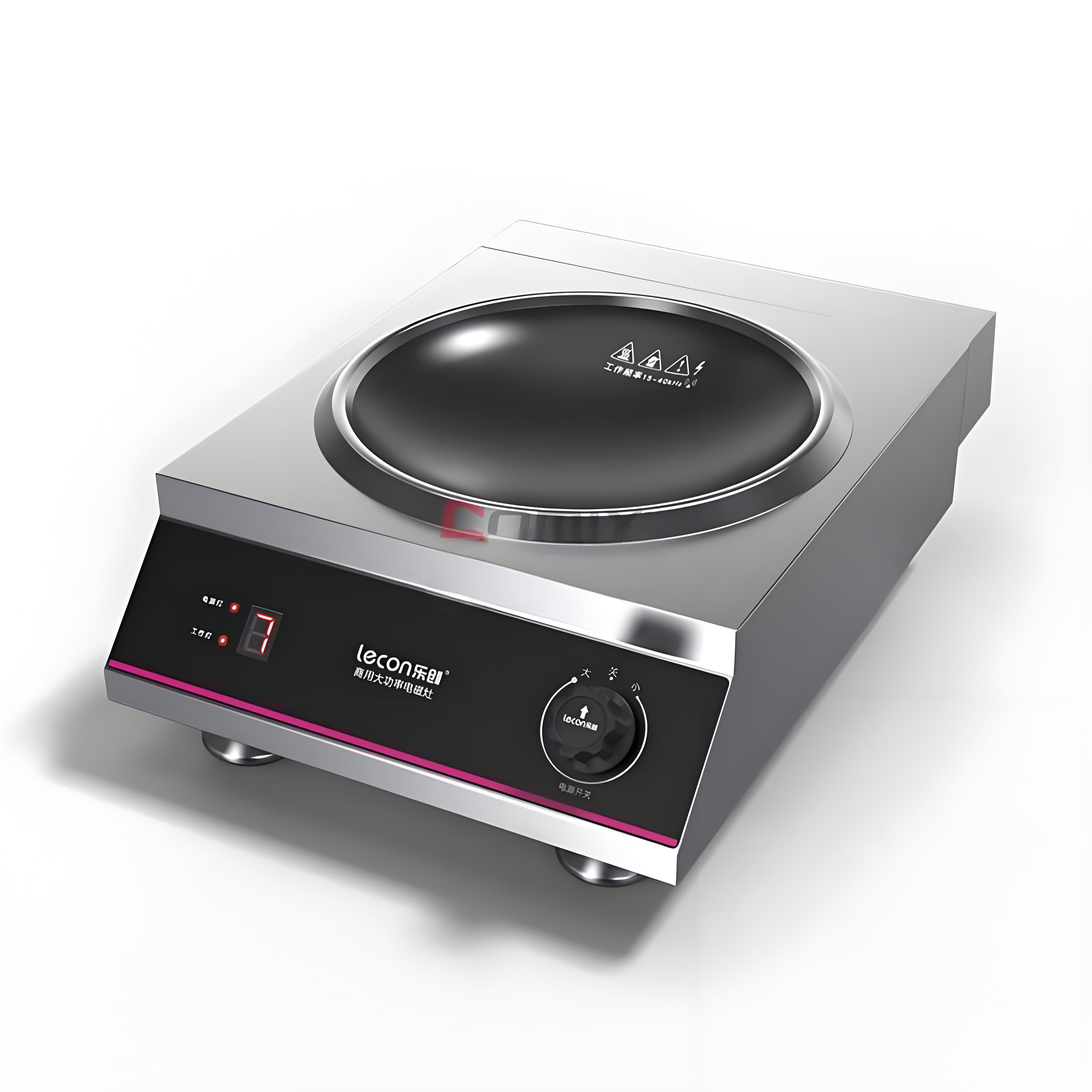As someone who’s spent years in the commercial kitchen equipment industry, I’ve seen countless restaurant owners and chefs wrestle with the decision of selecting the right commercial induction cooker. It’s not just about picking a shiny appliance—it’s about finding a tool that aligns with your menu, kitchen workflow, and long-term goals. Choosing the wrong model can lead to inefficiencies, higher costs, or even subpar dishes. So, how do you match an induction cooker to the specific dishes you serve? Let me walk you through the process, sharing insights from my experience and practical tips to help you make an informed decision.

Why Induction Cookers Matter in Commercial Kitchens
Induction cookers have become a staple in modern commercial kitchens, and for good reason. They’re energy-efficient, precise, and safe—no open flames, less heat in the kitchen, and faster cooking times compared to gas or traditional electric stoves. But not all induction cookers are created equal. The dishes you prepare—whether it’s stir-fries, slow-cooked stews, or delicate sauces—demand specific features from your equipment. A one-size-fits-all approach won’t cut it.
In my early days working with restaurant owners, I noticed a common mistake: many would choose a cooker based solely on price or brand, ignoring how their menu influences the technical requirements. This often led to frustration—either the cooker couldn’t handle the heat for high-volume stir-frying, or it lacked the precision for fine dining. Let’s break down the key factors to consider so you can avoid these pitfalls.
Key Factors to Consider When Choosing a Commercial Induction Cooker
1. Understand Your Menu’s Cooking Requirements
Every dish has unique cooking demands. For example, stir-frying requires high power and rapid heat adjustments, while simmering soups needs consistent low-temperature control. I’ve worked with chefs who swore by a particular model for their wok-based dishes, only to find it struggled with braising or steaming.
Start by analyzing your menu. Group your dishes by cooking method:
High-heat cooking: Stir-fries, searing meats, or wok-based dishes.
Low-heat cooking: Soups, sauces, or slow-cooked dishes.
Precision cooking: Chocolate tempering, custards, or delicate reductions.
Mixed methods: Menus with diverse dishes requiring flexibility.
Once you know your menu’s demands, you can narrow down models with the right power, temperature range, and control settings.

2. Power and Wattage: Match It to Your Dishes
The power rating of an induction cooker—measured in watts or kilowatts—determines how quickly it can heat up and maintain temperature. In my experience, this is where most people get overwhelmed. Here’s a simple guide:
High-power models (3.5 kW–5 kW or more): Ideal for high-heat cooking like stir-fries or boiling large pots of water. These are common in Asian restaurants or establishments with heavy wok usage.
Mid-range models (2 kW–3.5 kW): Suitable for general-purpose cooking, such as sautéing, braising, or simmering. Most Western-style kitchens opt for these.
Low-power models (1 kW–2 kW): Best for precision tasks like melting chocolate or keeping sauces warm.
A quick tip: Check your kitchen’s electrical capacity. High-power cookers often require three-phase power, which may not be available in smaller venues. I once consulted for a small café that fell in love with a 5 kW model, only to realize their single-phase setup couldn’t support it. Always confirm with your electrician before committing.
3. Cooking Surface and Size
The size and type of cooking surface matter as much as power. Induction cookers come in various configurations—single-zone, dual-zone, or wok-specific. Your choice depends on the cookware and dishes you use.
Flat-surface cookers: Great for pots and pans, ideal for Western-style kitchens or menus with sauces, soups, and stews.
Wok-specific cookers: Designed with a concave surface to cradle woks, perfect for Asian cuisine or high-heat stir-frying.
Multi-zone cookers: Offer flexibility for kitchens with diverse menus, allowing you to use multiple pots or pans simultaneously.
I recall a dim sum restaurant I worked with that struggled with a flat-surface cooker for their wok-based dishes. Switching to a wok-specific model boosted their efficiency and dish quality overnight. Make sure the cooker’s surface matches your primary cookware.

4. Temperature Control and Precision
Some dishes require pinpoint accuracy. For instance, tempering chocolate or preparing a hollandaise sauce demands precise low-temperature control. Other dishes, like stir-fries, need rapid shifts between high and low heat. Look for models with:
Wide temperature range: Ensures versatility across cooking methods.
Digital controls: Offer better precision than analog knobs.
Preset programs: Useful for repetitive tasks, like boiling water or simmering stocks.
I’ve seen high-end models with touchscreens and programmable settings save chefs hours of manual adjustments, especially in busy kitchens. If your menu includes delicate dishes, prioritize precision.
5. Durability and Build Quality
Commercial kitchens are tough environments. Your induction cooker needs to withstand constant use, spills, and heavy cookware. Look for:
Stainless steel or reinforced frames: Durable and easy to clean.
High-quality glass-ceramic surfaces: Resistant to scratches and thermal shock.
IPX ratings: Indicate water and dust resistance, crucial for busy kitchens.
I once advised a client to invest in a slightly pricier model with a higher IPX rating. A year later, they thanked me when a spill didn’t damage the unit, unlike their previous cooker.
6. Energy Efficiency and Operating Costs
Induction cookers are generally more energy-efficient than gas or electric stoves, but models vary. High-power cookers consume more electricity, which can add up in high-volume kitchens. Check the energy rating and calculate potential costs based on your usage. For smaller kitchens, a mid-range model often strikes the best balance between performance and cost.
Comparing Common Commercial Induction Cooker Types
To make things easier, here’s a table summarizing the best cooker types for different dishes:
| Dish Type | Recommended Cooker Type | Power Range | Key Features |
|---|---|---|---|
| Stir-fries, wok dishes | Wok-specific induction | 3.5–5 kW | Concave surface, high power |
| Soups, stews, braising | Flat-surface, single-zone | 2–3.5 kW | Wide temperature range, durability |
| Sauces, precision tasks | Flat-surface, multi-zone | 1–2 kW | Digital controls, low-temp precision |
| Mixed menus | Multi-zone induction | 2–4 kW | Versatility, multiple cooking zones |
This table is a starting point. Always test a model with your cookware and recipes before purchasing, as compatibility can vary.
Practical Steps to Choose the Right Model
Now that you know the key factors, here’s how to put it all together:
Audit Your Menu: List your top dishes and their cooking methods. Note the cookware you use (e.g., woks, saucepans, stockpots).
Assess Your Kitchen: Check available space, electrical setup (single-phase or three-phase), and daily cooking volume.
Set a Budget: Balance upfront costs with long-term savings from energy efficiency and durability.
Research Brands and Models: Look for reputable brands like Vollrath, Max Burton, or Hatco. Read reviews from other chefs with similar menus.
Test Before Buying: If possible, demo the cooker in your kitchen. Many suppliers offer trial periods or rentals.
Consult Your Team: Involve your chefs in the decision. They’ll be using the equipment daily and can spot potential issues.
I can’t stress enough how valuable testing is. A client of mine once skipped this step and ended up with a cooker that couldn’t maintain consistent heat for their signature dish. A quick demo would’ve saved them thousands.

Common Mistakes to Avoid
Over the years, I’ve seen a few recurring errors when choosing induction cookers:
Ignoring cookware compatibility: Induction cookers only work with ferromagnetic materials like cast iron or certain stainless steels. Test your pots and pans before buying.
Overbuying power: A 5 kW cooker sounds impressive, but if your menu doesn’t need it, you’re wasting electricity and money.
Neglecting maintenance: Induction cookers are low-maintenance but not maintenance-free. Clean the surface daily and check for cracks or wear.
Focusing only on price: Cheap models often lack durability or precision, costing more in repairs or replacements.
My Personal Take: It’s About Your Vision
Choosing an induction cooker isn’t just a technical decision—it’s a reflection of your culinary vision. Are you running a fast-paced noodle shop where speed is king? Or a fine-dining restaurant where every degree matters? Your cooker should empower your team to execute that vision flawlessly. I’ve worked with chefs who transformed their kitchens by investing in the right equipment, and others who struggled because they cut corners. Take the time to get it right.

Related Questions and Answers
To wrap things up, here are some common questions I’ve heard from clients, along with quick answers:
Q: Can I use any cookware with an induction cooker?
A: No, only ferromagnetic cookware (like cast iron or magnetic stainless steel) works. Test your pots with a magnet—if it sticks, they’re compatible.
Q: Are wok-specific induction cookers worth it?
A: Absolutely, if your menu relies on wok cooking. They’re designed for high heat and fit woks perfectly, improving efficiency and flavor.
Q: How do I know if my kitchen’s power supply can handle a high-wattage cooker?
A: Check your electrical panel’s specs or consult an electrician. High-power models often need three-phase power, which isn’t always available in smaller spaces.
Q: What’s the lifespan of a commercial induction cooker?
A: With proper care, a quality model can last 5–10 years in a busy kitchen. Regular cleaning and avoiding overloading extend its life.
Q: Should I buy a single-zone or multi-zone cooker?
A: It depends on your menu. Single-zone is fine for focused menus; multi-zone offers flexibility for diverse dishes or high-volume cooking.





